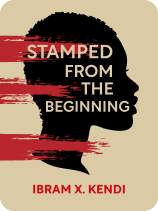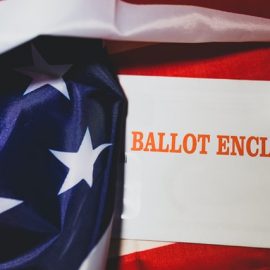
This article is an excerpt from the Shortform book guide to "Stamped from the Beginning" by Ibram X. Kendi. Shortform has the world's best summaries and analyses of books you should be reading.
Like this article? Sign up for a free trial here.
What were Jim Crow laws and how were they applied? When did Jim Crow segregation start and end?
Between 1890 and 1910, Southern states passed laws called Jim Crow laws that allowed segregation and severely limited Black civil liberties. These laws stayed in effect until 1965.
Keep reading to learn about Jim Crow laws and their lingering effects to this day.
The Advent of Jim Crow
According to Ibram X. Kendi, the author of Stamped From the Beginning, Jim Crow laws were possible because early antiracist laws only targeted racist policy language (rather than guarding against racist outcomes). This oversight allowed laws that were technically legal (because they avoided racist language) but that discriminated against Black people (for example, by requiring subjective civics tests before allowing people to vote). This tactic was strengthened by Plessy v. Ferguson (1896), a Supreme Court ruling establishing that racial differences were real and that states could discriminate on racial grounds so long as they provided “equal” accommodations.
| What Were Jim Crow Laws and How Were They Applied? One of the most insidious and pervasive Jim Crow practices was the suppression of the Black vote that was supposed to be guaranteed by the 15th Amendment, ratified in 1870. Whereas some Jim Crow policies (like legal segregation) have gone away, voter suppression remains a concern to this day. As early as 1890, Mississippi built poll taxes and literacy tests into its constitution in an explicit move to “exclude the Negro” from politics by exploiting the lower educational and socioeconomic status of Black men as compared to their White counterparts. Soon, this “Mississippi Plan” proliferated throughout other (mostly Southern) states. Another provision of Mississippi’s constitution stripped voting rights from convicted felons for the rest of their lives. Such a policy disproportionately targets Black people because, as discussed below, Black people are disproportionately convicted of crimes. Yet criminal disenfranchisement is still relatively widespread—as of 2021, 11 states restrict voting rights even for people who have completely finished their sentences. Meanwhile, in 2021, Georgia passed voting laws that make it harder to vote early or by mail, methods that had become popular in majority-Black areas as an antidote to long lines and insufficient polling locations. Likewise, Georgia and other states have capitalized on spurious accusations of voter fraud to pass strict voter ID requirements that disproportionately block non-White citizens from voting. |
The Myth of Black Criminality
Kendi says that part of the justification for this widespread discrimination was the notion that Black people were dangerous and needed to be controlled. He argues that the post-Civil War era spurred the disproportionate arrest and prosecution of Black people—whose widespread incarceration was then used as evidence of Black criminality. Kendi argues that even as White racists began regularly lynching Black people for even the slightest of perceived misdeeds, this mob violence became evidence of Black moral turpitude. For example, in an address to Congress, President Theodore Roosevelt declared that Black rapists were the number one cause of lynchings.
(Shortform note: According to legal scholar Michelle Alexander, after the Civil War, racist Whites used a combination of criminal codes and extrajudicial killings to reestablish the same social hierarchy and labor exploitation that had been in place under slavery. In The New Jim Crow, Alexander explains that many Southern states passed laws allowing them to arrest Black people for crimes like vagrancy and then lease these prisoners into low-paying or unpaid labor. Meanwhile, as Isabel Wilkerson points out in Caste, racist terrorist practices like lynching reinforced White supremacy while suppressing Black resistance to the social order.)

———End of Preview———
Like what you just read? Read the rest of the world's best book summary and analysis of Ibram X. Kendi's "Stamped from the Beginning" at Shortform.
Here's what you'll find in our full Stamped from the Beginning summary:
- How enslavers convinced themselves that slavery benefited slaves
- Why most antiracist reformers harbored racist thoughts
- How to achieve an antiracist society






